Hoxne, Suffolk
Up to 1834
In 1779, the Suffolk Hundreds of Hartismere, Hoxne and Thredling were incorporated under a local Act of Parliament for the better Relief and Employment of the Poor, within the several Hundreds of Hartsmere, Hoxne, and Thredling, in the County of Suffolk (19 Geo.3 c.13). However, the incorporation never raised the £16,000 required for the erection of a house of industry, and the incorporation was never carried into effect.
Several member parishes did operate workhouses of their own, however. In Fressingfield, a house on Low Road was once used as the parish workhouse.
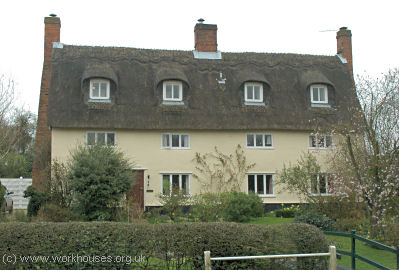
Fressingfield former parish workhouse, 2005
© Peter Higginbotham.
Badingham had a workhouse on Mill Road. Buildings still survive known as the Old Workhouse and Workhouse Cottages.
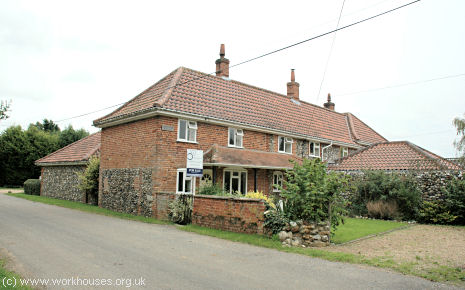
Badingham Workhouse Cottages, 2006
© Peter Higginbotham.
The old Guildhall in Worlingworth, which dates from around 1500, once served as the parish workhouse.
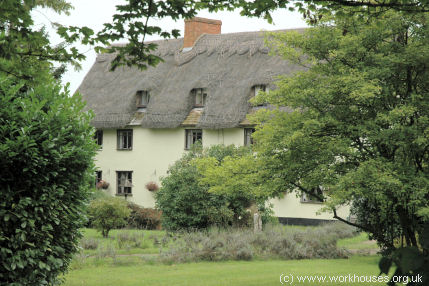
Worlingworth Workhouse Cottages, 2006
© Peter Higginbotham.
At Laxfield, a workhouse once operated in a building now known as the Old Bakery.
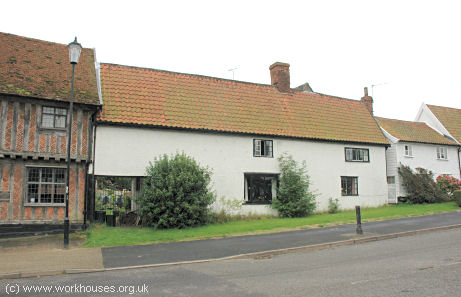
Laxfield former parish workhouse, 2006
© Peter Higginbotham.
After 1834
The Hoxne (pronounced Hoxen) Poor Law Union formally came into being on 24th June 1835. Its operation was overseen by an elected Board of Guardians, 35 in number, representing its 24 constituent parishes as listed below (figures in brackets indicate numbers of Guardians if more than one):
County of Suffolk: Athelington, Badingham (2), Bedfield, Bedingfield, Brundish, Denham, Dennington (2), Fressingfield (3), Horham, Hoxne (2), Laxfield (2), Mendham, Metfield (2), Monk Soham, Saxstead, Southolt, Stradbroke (3), Syleham, Tannington, Weybred [Weybread] (2), Wilby (2), Wingfield, Withersdale, Worlingworth (2).
The population falling within the Union at the 1831 census had been 15,166 with parishes ranging in size from from Athelington (population 129) to Stradbroke (1,527). The average annual poor-rate expenditure for the period 1833-35 had been £19,904 or £1.6s.3d. per head of the population.
A new Hoxne Union workhouse was built in 1835 at Barley Green near Stradbroke and was based on the popular cruciform plan. The Poor Law Commissioners authorised an expenditure of £8,274 on construction of the building which was to accommodate 300 inmates. The workhouse location and layout are shown on the 1886 map below.
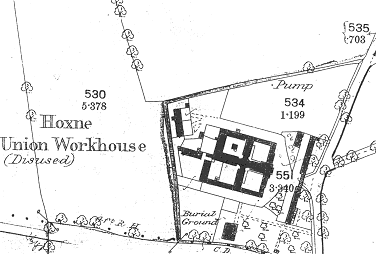
Hoxne workhouse site, 1886
The workhouse was closed in 1871 and seems to have stood empty for many years. It was used as a prisoner of war camp during the First World War but the main building appears to have been demolished by the early 1920s. The single-storey entrance ranges and the fever block at the rear survive, having been converted to residential use.
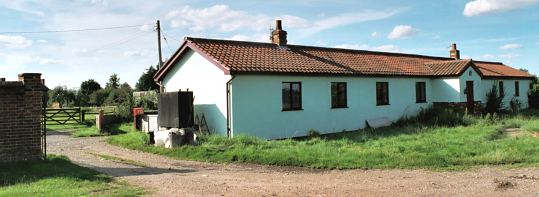
Hoxne entrance range from the south, 2001.
© Peter Higginbotham.
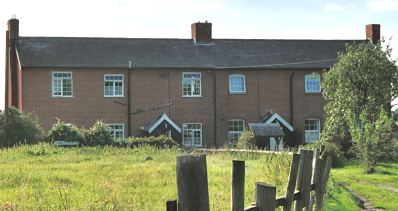
Hoxne fever block from the east, 2001.
© Peter Higginbotham.
In 1907, the Hoxne Union was merged with the neighbouring Hartismere Union to form a new Hartismere and Hoxne Union.
Staff
Inmates
Records
Note: many repositories impose a closure period of up to 100 years for records identifying individuals. Before travelling a long distance, always check that the records you want to consult will be available.
- Suffolk Archives, The Hold, 131 Fore Street, Ipswich, Suffolk IP4 1LR. Very few local records survive — holdings include: Guardians' minute books (1905-08); etc.
Bibliography
- Higginbotham, Peter The Workhouse Encyclopedia (2014, The History Press)
Links
- None.
Unless otherwise indicated, this page () is copyright Peter Higginbotham. Contents may not be reproduced without permission.


